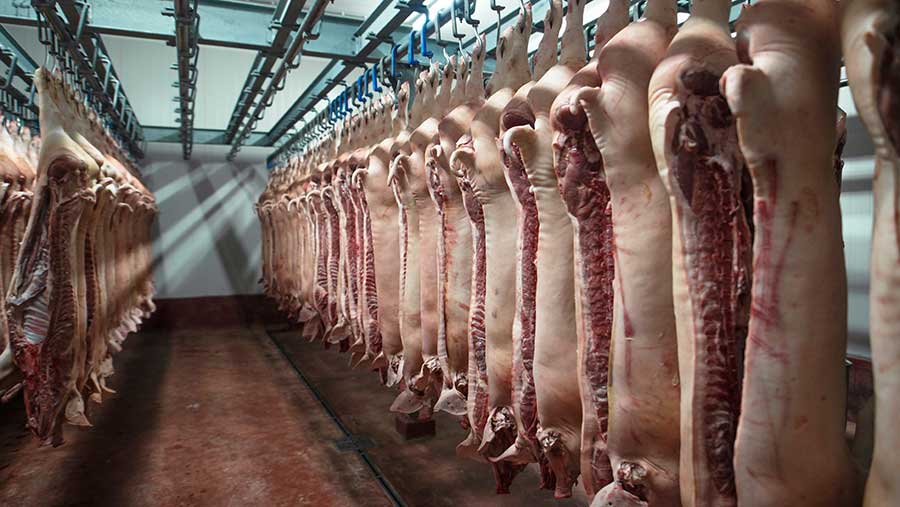High costs and ASF lead to less pigs forecast globally in 2023
 © Littlewolf1989/Adobe Stock
© Littlewolf1989/Adobe Stock Rising input costs, disease risk and increased legislation are three key challenges affecting pig producers both in the UK and Europe.
These challenges are leading to tight supply and a reduced global sow herd, according to speakers at the Pigs Tomorrow 2023 conference, held in Leicestershire on Tuesday 9 May.
Rupert Claxton, meat and livestock director at Gira Food, said: “The costs of all sorts of things have gone up. Some have started to soften slightly, as expected, but we talk about living with higher prices.”
See also: Lack of supply pushes pig prices to new record highs
Per-capita consumption is expected to remain flat globally, with falls in Europe offset by increases in Asia.
Mr Claxton said China remained a major market for UK producers and represented about 20% of the global population, but demand had fluctuated in recent years.
Import recovery by China has been delayed by Covid-19 restrictions, with China about two years behind the process for lockdowns. Trade is expected to start to recover in 2023, but market access is still suspended for several key UK exporters at present.
Korea was also noted as an important, high-value market, while demand from Japan was reported as “steady”.
Cheap US pork is making it more competitive in export markets. However, pig producers in the US are currently losing money, with losses reported at about $20-$25 (£16-£20) a pig, according to Mr Claxton. This could affect longer-term supply if prices don’t recover.
In the UK, the EU-spec standard pig price has increased by 53p/kg during the past 12 months to reach an all-time high of 219.53p/kg deadweight in the week to 6 May.
African swine fever
This disease has caused major issues globally, decimating domestic pig herds in some countries.
In Europe, the effect on production from African swine fever (AFS) is limited, with only small numbers of pigs dying on farm. However, it is creating trade problems and issues in terms of access to markets.
The number of cases is steadily rising, and this year there has been more ASF cases in Europe than last year, according to Christian Fink Hanson, director of the Danish Research Centre.
Denmark and Spain pig outlook
The Danish pig herd has lost more than 100,000 breeding sows in the past few years, but it is now beginning to stabilise.
Industry figures show total pig numbers in Denmark were down 14% on the year in April 2023, and the number of slaughter pigs decreased by 25% on the year.
The Danish Research Centre’s Christian Fink Hanson said 10% of Danish production was for its own domestic market and 90% of its produce was exported.
Danish producers are making good improvements in daily liveweight gain and feed efficiency.
Spain
Isaac Huerta, technical services manager at the Pig Improvement Company, said Spain had tripled the number of large pig farms in the past decade.
The country is the largest producer in the EU, and in 2022 it was 214% self-sufficient for pork, with a heavy focus on exports to Asia.
Unlike other European countries, production has continued to increase and has grown by 46% during the past five years.
Spanish producers, like UK producers, had a period of losses, but are now starting to turn a profit and recoup some of the lost revenue.
